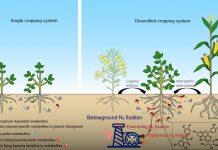Wang P Kinraide TB Zhou DM et al.. Plasma Membrane Surface Potential: Dual Effects upon Ion Uptake and Toxicity. Plant Physiology 2011 155(2): 808-820. (IF 6.451 生物,二区Top)
Abstract
Electrical properties of plasma membranes (PMs) partially controlled by the ionic composition of the exposure medium play significant roles in the distribution of ions at the exterior surface of PMs and in the transport of ions across PMs. The effects of coexisting cations (commonly Al3+ Ca2+ Mg2+ H+ and Na+) on the uptake and toxicity of these and other ions (such as Cu2+ Zn2+ Ni2+ Cd2+ and H2AsO4−) to plants were studied in terms of the electrical properties of PMs. Increased concentrations of cations or decreased pH in rooting media whether in solution culture or in soils reduced the negativity of the electrical potential at the PM exterior surface (ψ0o). This reduction decreased the activities of metal cations at the PM surface and increased the activities of anions such as H2AsO4−. Furthermore the reduced ψ0o negativity increased the surface-to-surface transmembrane potential difference thus increasing the electrical driving force for cation uptake and decreasing the driving force for anion uptake across PMs. Analysis of measured uptake and toxicity of ions using electrostatic models provides evidence that uptake and toxicity are functions of the dual effects of ψ0o (i.e. altered PM surface ion activity and surface-to-surface transmembrane potential difference gradient). This study provides novel insights into the mechanisms of plant-ion interactions and extends current theory to evaluate ion bioavailability and toxicity indicating its potential utility in risk assessment of metal(loid)s in natural waters and soils.







